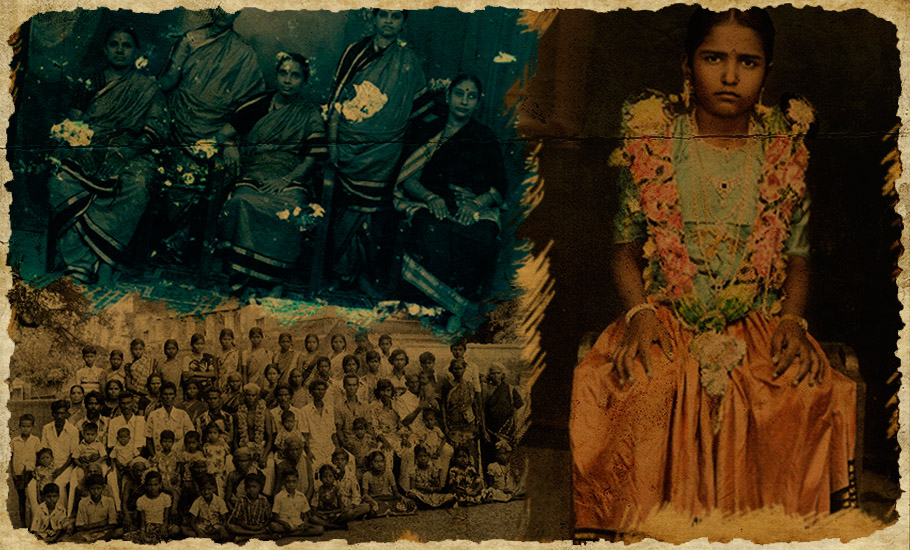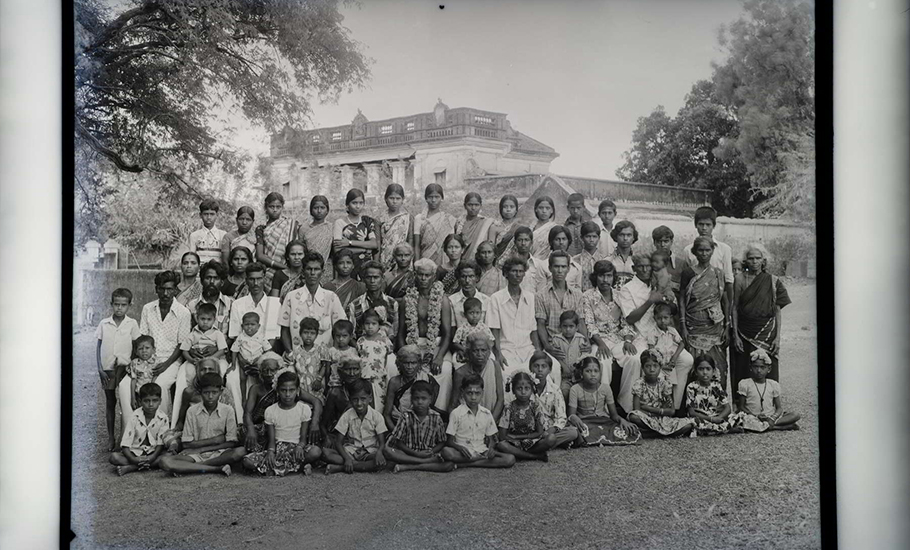
- Home
- News
- Analysis
- States
- Perspective
- Videos
- Education
- Entertainment
- Elections
- World Cup 2023
- Features
- Health
- Business
- Series
- Economy Series
- Earth Day
- Kashmir’s Frozen Turbulence
- India@75
- The legend of Ramjanmabhoomi
- Liberalisation@30
- How to tame a dragon
- Celebrating biodiversity
- Farm Matters
- 50 days of solitude
- Bringing Migrants Home
- Budget 2020
- Jharkhand Votes
- The Federal Investigates
- The Federal Impact
- Vanishing Sand
- Gandhi @ 150
- Andhra Today
- Field report
- Operation Gulmarg
- Pandemic @1 Mn in India
- The Federal Year-End
- The Zero Year
- Premium
- Science
- Brand studio
- Home
- NewsNews
- Analysis
- StatesStates
- PerspectivePerspective
- VideosVideos
- Entertainment
- ElectionsElections
- Sports
- Loading...
Sports - Features
- BusinessBusiness
- Premium
- Loading...
Premium

Ruined and torn: TN tries to recapture charm of studio photography

Until the digital age dawned and pouts and ostensible ear-to-ear smiles became the norm for photographs, families would once in a while dress up in their fineries with oodles of talcum powder on their faces, mount rickshaws, or Ambassador cars, depending on who could afford what, and head to the nearest photo studio. They would then follow the photographer’s instructions and take...
Until the digital age dawned and pouts and ostensible ear-to-ear smiles became the norm for photographs, families would once in a while dress up in their fineries with oodles of talcum powder on their faces, mount rickshaws, or Ambassador cars, depending on who could afford what, and head to the nearest photo studio.
They would then follow the photographer’s instructions and take positions against walls painted blue or pink to serve as bright backgrounds. Irrespective of whether the photographer said “smile” or not, most posers just looked at the camera. If the camera has scaled up on technology since, people have scaled up on their posing skills. But the quintessential photo studio has not been able to survive the digital tsunami.
So what happened to our old still photography studios believed to have started in 1855 with the arrival of the camera officially in India?
To find answers, a team of historians and photographers comprising eight members began a preliminary survey in 2015. The project documented the history of Tamil studio photography from 1880 to 1980.
Called Studies in Tamil Studio Archives and Society (STARS), the aim of the project, funded by the British Library under its Endangered Archives Programme, was to explore the feasibility, scope and extent of creating an archive of family portraiture produced in the commercial photo studios of Tamil Nadu, since their appearance in the second half of the 19th century and up to the introduction of mechanised processing of negatives and prints in the 1980s.

The idea was to locate different productions of black and white manually processed studio photography such as prints, negatives and glass plates which are disappearing due to lack of care and interest.
The project was designed around two outcomes. First, a written survey of the early commercial photo studios in eight target towns (Chennai, Coimbatore, Cuddalore, Karaikudi, Kumbakonam, Madurai, Pondicherry and Tirunelveli), as well as six other towns (Chidambaram, Jayamkondan, Meensurutti, Pollachi, Tindivanam and Villupuram), aiming at identifying photographic material to be digitised in the context of a major project. Second, a preliminary sample and listing of digitised photographs, negatives and glass plates sourced from three different types of locations: photo studios, private homes and second-hand markets.
Led by social anthropologist Zoe Headley and photographer K Ramesh Kumar, the members in the team travelled to the towns across Tamil Nadu in search of old studios.
The survey, however, confirmed that these unique photographic productions were severely endangered by chemical, climatic and human factors and their digitisation was urgent. The photographic productions of Tamil studios, the survey said, are extremely endangered due to the detrimental tropical climate of southern India with its year-long high humidity. However, there are other reasons for the destruction as well.
“For more than 50 years, the owners of the studios have been regularly and voluntarily destroying their archives by selling negatives (glass and film) to silver-extractors. Many of the earliest studios have closed over the last 30 years and the descendants of studio photographers have no interest or understanding of the photographic productions of their forefathers,” says the report prepared by the STARS.
The team visited more than 1,000 photo studios, private homes and scrap markets as part of the project. Many old studios are not functioning today. The manual skills have vanished with technological advancement.
According to the researchers, Nalla Pillai Studio in Kumbakonam is the oldest photo studio in Tamil Nadu. Opened in 1878, Nalla Pillai Studio is today run by the great grandsons of its founder. The Star Studio in Ooty, however, is the second-longest running commercial photo studio in Tamil Nadu.

“We found that 85% of those old photographic materials were lost. But we were hopeful and we wanted to document the remaining 15% at least. Our repeated visits helped and we could find many negatives and old photographs from the godowns of old studios and scrap markets across Tamil Nadu,” says Ramesh Kumar, who heads the Photo Archive of the French Institute of Pondicherry. For example, the team digitised 152 glass-plates, 32 prints and seven celluloid negatives from the 143-year-old Nalla Pillai Studio, which is a digital photo studio now.
“We found a collection of damaged glass-plates stored in a box inside the Nalla Pillai Studio. These glass-plates yield a testimony of Kumbakonam’s vibrant religious activities and the numerous sadhus who would flock here for the yearly temple festivals as well as the famous Mahamaham festival, which occurs every 12 years,” he says.
The STARS Archive is a multi-site physical and digital repository of the productions of commercial studio photography between 1880 and 1980. It has more than 40,000 photographs–all contributions from many studio owners, individuals and families who have shared their photos with them. Its Physical Archive comprises more than 5,000 prints and several hundred negatives from studios located in over 150 towns in present-day Tamil Nadu, in the erstwhile Madras Presidency, Sri Lanka as well as from South-East Asia (Burma, Malaysia, Singapore, Indonesia).

“Our main sources for this archive are discarded family portraits found in second-hand shops in Tamil Nadu as well as spontaneous donations from private owners and collectors,” says Ramesh Kumar.
The art of photography was different those days. There were monochrome silver halide glass-plates negatives, monochrome silver halide synthetic negatives, positives on glass-plates, photomechanical monochrome positives on paper, silver halide monochrome positives on paper, and chromogenic colour positives on paper. Collodion wet plate and gelatin dry plate were the two main glass-plate negatives used those days.
Use of glass instead of paper as a foundation gave a sharper negative and the advantage was several prints could be produced from one negative. “Scanning and sorting these negatives were challenging. Each type needed special care. The process took a long time. But we knew that we were trying to recollect the memories of an era through the ruined and outdated negatives. Even though it was time consuming, we are happy that the archive will be useful for researchers and others,” says Ramesh Kumar.
An exhibition of some photographs from the physical archive of STARS is on at Gallery OneTwo in Ooty. Titled ‘The Story of the Past’, at least 35 photographs from the physical collection of STARS have been exhibited there. “Photographs have a great role in our social life as they document memories and events. In olden days, natural lights have been used productively. Each photograph is a material to study in detail. We hope the archive would provide researchers with unique visual material and metadata of Tamil society at moments of crucial social and cultural changes,” Ramesh Kumar.
The archive is accessible for research purposes. It is located in the French Institute of Pondicherry. “If you own a print or negative produced by Tamil studios, please let us know. Any black and white photo is of interest to us ( s.t.a.r.s.teamproject@gmail.com) and will help us to add to the archive,” he says.

